Textile art created from waste fabrics and natural dyes are a match made in heaven, when you are aiming to foster a sustainable earth.
Used and damaged bedsheets and clothing – indigo-dyed and stitched to create immersive, draped, walk-through installations; layered sculptures reformed from pulped and dyed discarded textiles; and paintings made with pulped and dyed textile waste. These are the works of Australian artist Rachael Wellisch who uses natural indigo dye, salvaged textiles and installation to communicate her passion for the environment and its sustainability.
Graduating as a mature student with a Bachelor of Fine Art with Honours in 2016 from Griffith University (Brisbane, Queensland), Rachael received awards for academic excellence during each year of her studies, including ‘Fine Art Student of the Year’ in her first year, 2011.
She is currently a post-confirmation Doctor of Visual Arts candidate and tutor at Griffith University and has also been winner of the St Andrew’s War Memorial Hospital Art Prize in 2016. She has been a finalist in many other art and textile awards, and, most recently, was highly commended for the Art Edit Self Represented Art Prize 2021.
Rachael has undertaken artist residencies in Shankill Castle, Ireland and House Conspiracy in Brisbane, during 2017, as well as Art Quarter Budapest in Hungary, during 2018.
She was awarded an Arts Queensland Grant in 2018, a National Assistance Program for the Arts Grant in 2020, and has exhibited in Australia, Ireland, Austria, Japan and the UK.
Rachael’s work is held in the St Andrew’s War Memorial Hospital collection, the Westin Hotel in Perth, Crown Towers in Sydney and is also held in private collections within Australia, UK, France and Ireland.
Living in on Quandamooka Country (the indigenous name for the coastal area of Brisbane, Queensland), Rachael respectfully acknowledges the traditional custodians of the land on which she works and lives – the Jagera and Turrbal people – and pays respect to Elders past and present, recognising their cultural heritage, beliefs and relationship with the land.
Our interview with Rachael reveals how her background of travel and international family links influenced her sense of connection as a global citizen and heightened her awareness of humanity’s relationship with the natural world. We learn how she has combined her art skills with the power of used textiles to reframe and awaken us to the environmental problems we all face – and how she used stained and threadbare bedsheets, redirected from landfill, pulping and dyeing them to transform them into meaningful textile art.
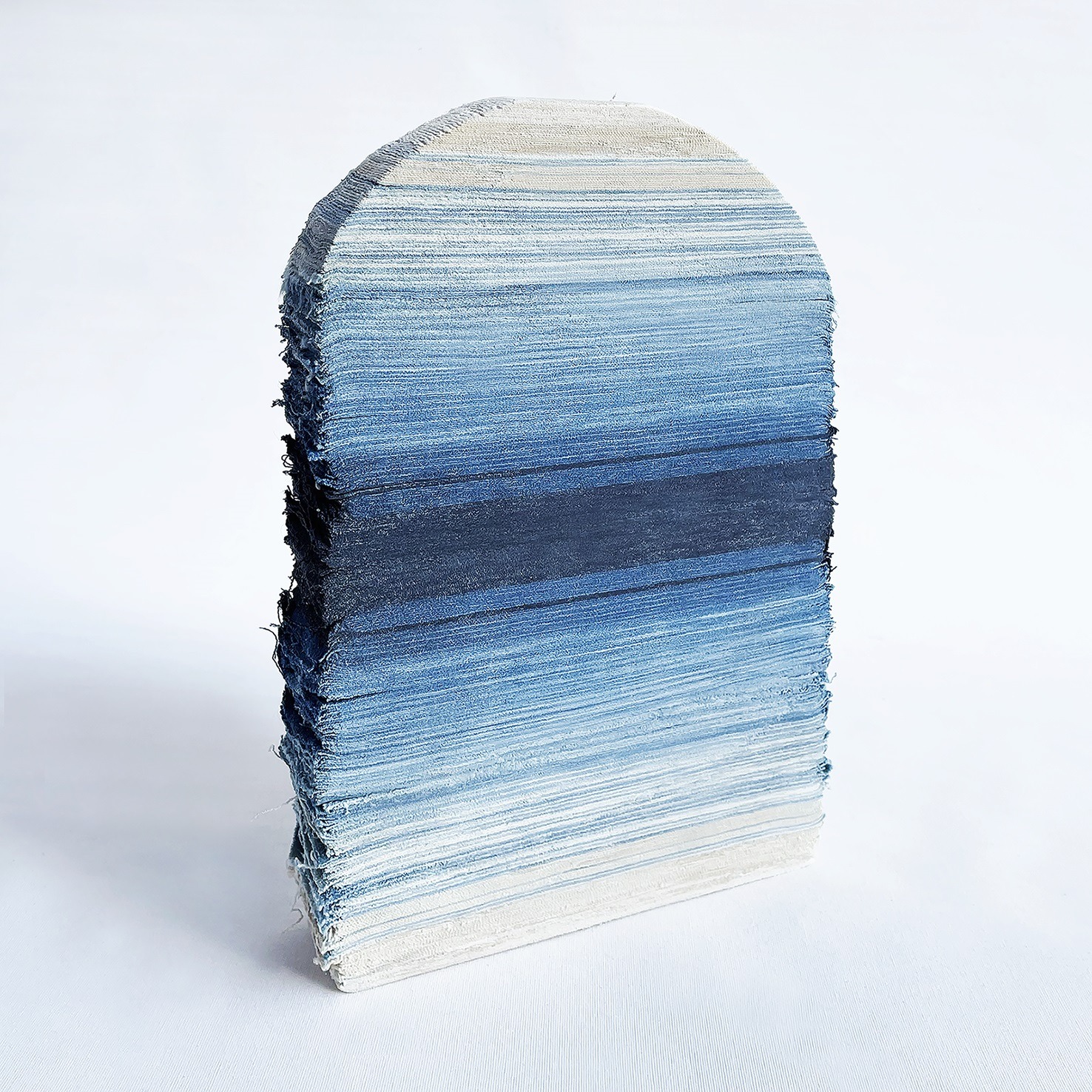
Wrapped in textiles
TextileArtist.org: What initially attracted you to textiles as a medium? How was your imagination captured?
Rachael Wellisch: The intimacy and tactility are what makes it a super engaging medium. Also, the awareness that we are literally wrapped in textiles our whole lives, as clothing, protection, comfort and identity, and they’re present through so many rituals of everyday life such as dining, sleeping, love, sex and death.
I also think it is important to consider the social and environmental impact of the materials I work with, so I use salvaged, household textile waste, out of concern for the textile industry’s detrimental impacts on the natural environment.
Sustainability advocate, Jane Milburn in her 2017 book Slow Clothing states that Australians buy an average of 27kg of textiles (apparel and household) each year and also discard 23kg into landfill. It is the second-largest contributor to landfill after food waste. Additionally, the three trillion dollar global apparel industry rates second only to oil in a list of the world’s largest industrial polluters.
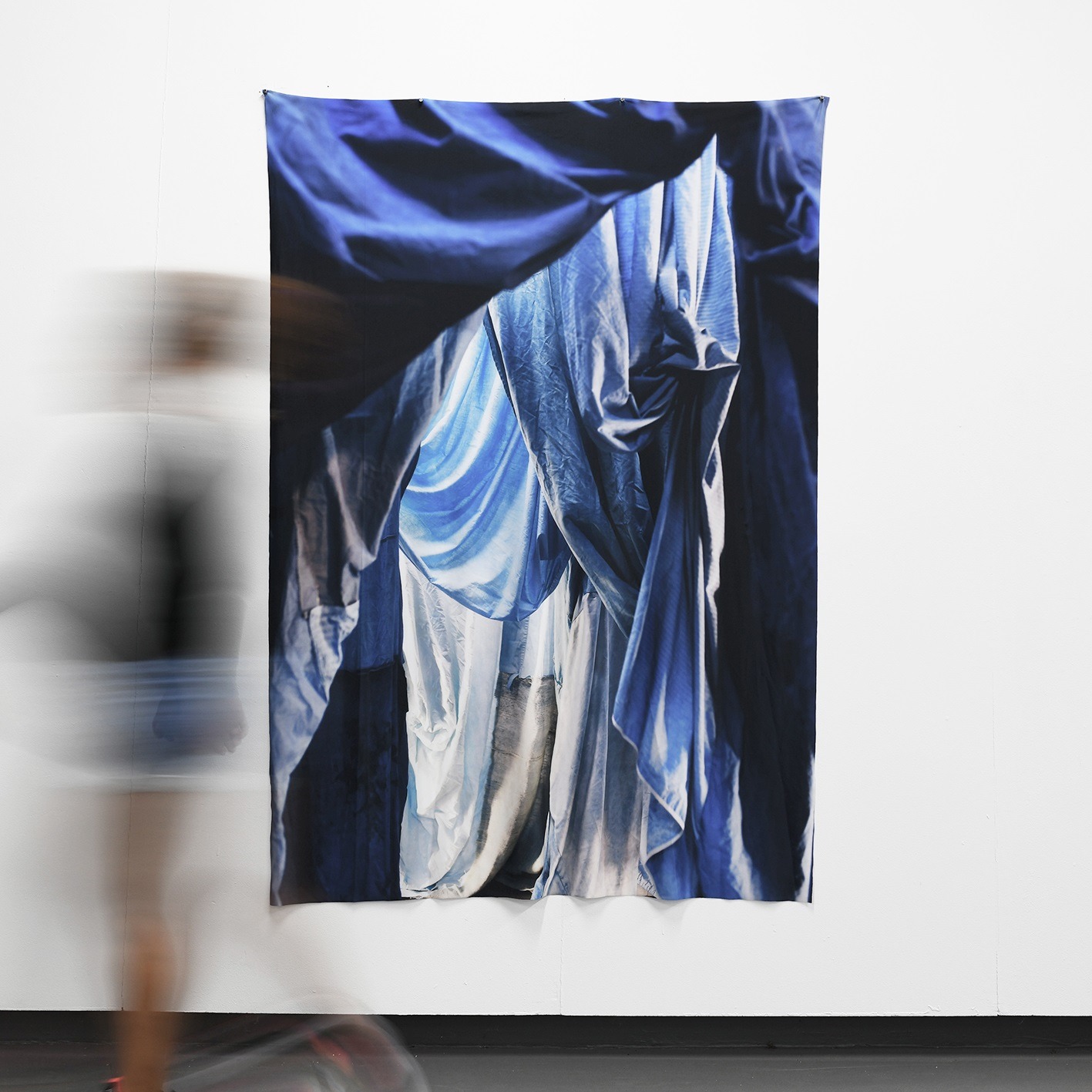
What or who were your early influences and how has your life/upbringing influenced your work?
Travel, and having lived in different countries, has definitely been formative in what I make. Born on unceded Aboriginal land in Australia, my family background is a mix of nationalities (including Hungarian, Lebanese, Irish and German), my Irish/Dutch husband is now an Australian citizen, and my daughter was born whilst we were living in Dubai at the peak of the Global Financial Crisis. These potentially destabilising elements have actually influenced my sense of connection as a global citizen, and I draw on all these threads.
Art-making also helps me feel connected – to materials and histories and other people through exhibiting, and I feel a responsibility to contribute to conversations around ecology, consumption and sustainability in my work. Despite decades of activism protesting environmental damage, motivating change seems so difficult due to frustrations, fears and a sense of exhaustion. The current acceleration of impacts, however, means it is something that must be reframed and shared!
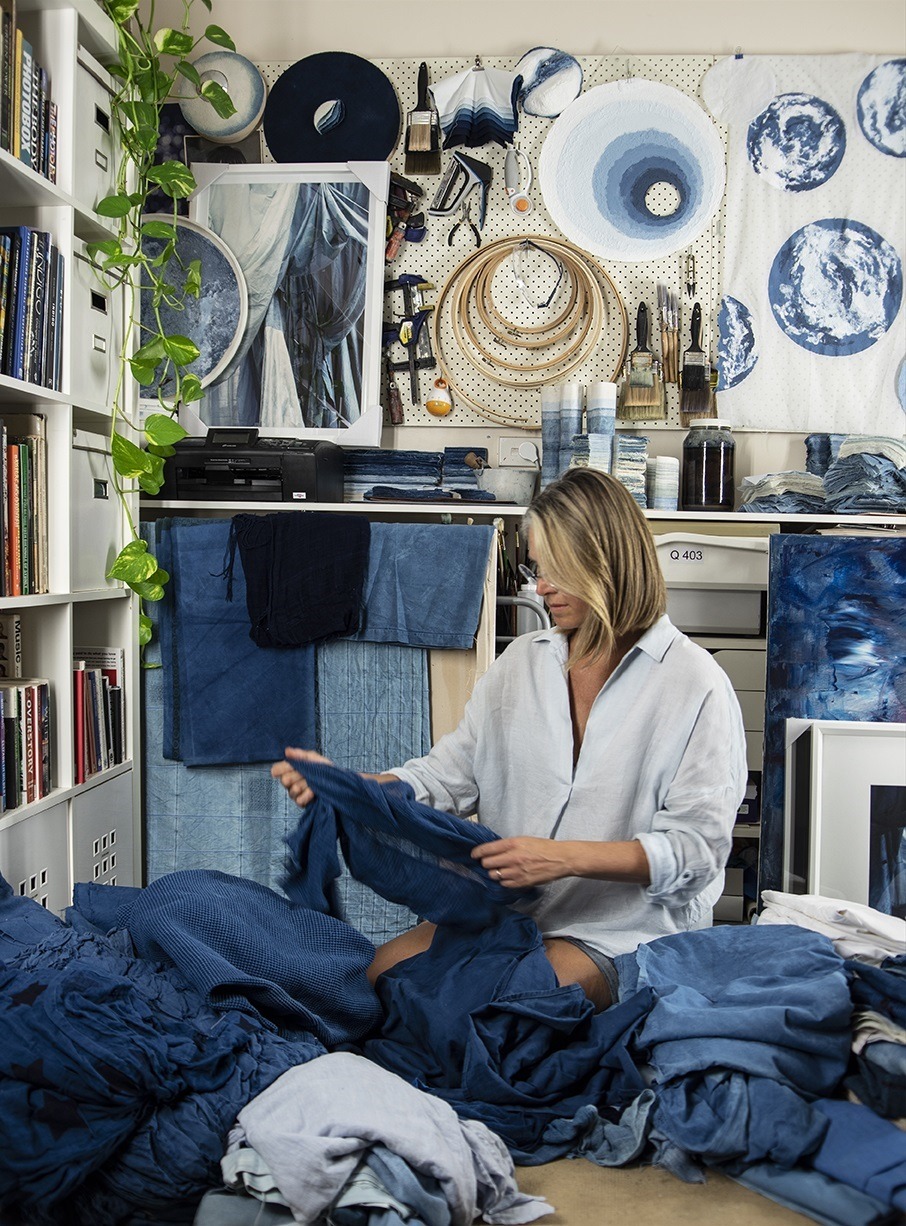
What was your route to becoming an artist?
I have always had various art or craft projects as a hobby, however, when my daughter was born, I finally decided to learn more intensively, and see if it was something I could do full time. I began with evening classes in sculpture, ceramics and photography, and commenced a Bachelor of Fine Art in 2011. I just kept at it and am now nearing completion of a Doctorate in Visual Arts.
Art school as a mature-age student has its difficulties, as it requires a series of sacrifices, which also includes sacrifices for my family. I’ve been fortunate though to have been offered casual teaching, and the “art life” really gives my whole family so much richness and value. Through visiting museums and exhibitions together, having their help in the studio, and critical conversations on art and politics, my family are also exposed to a broad visual vocabulary.
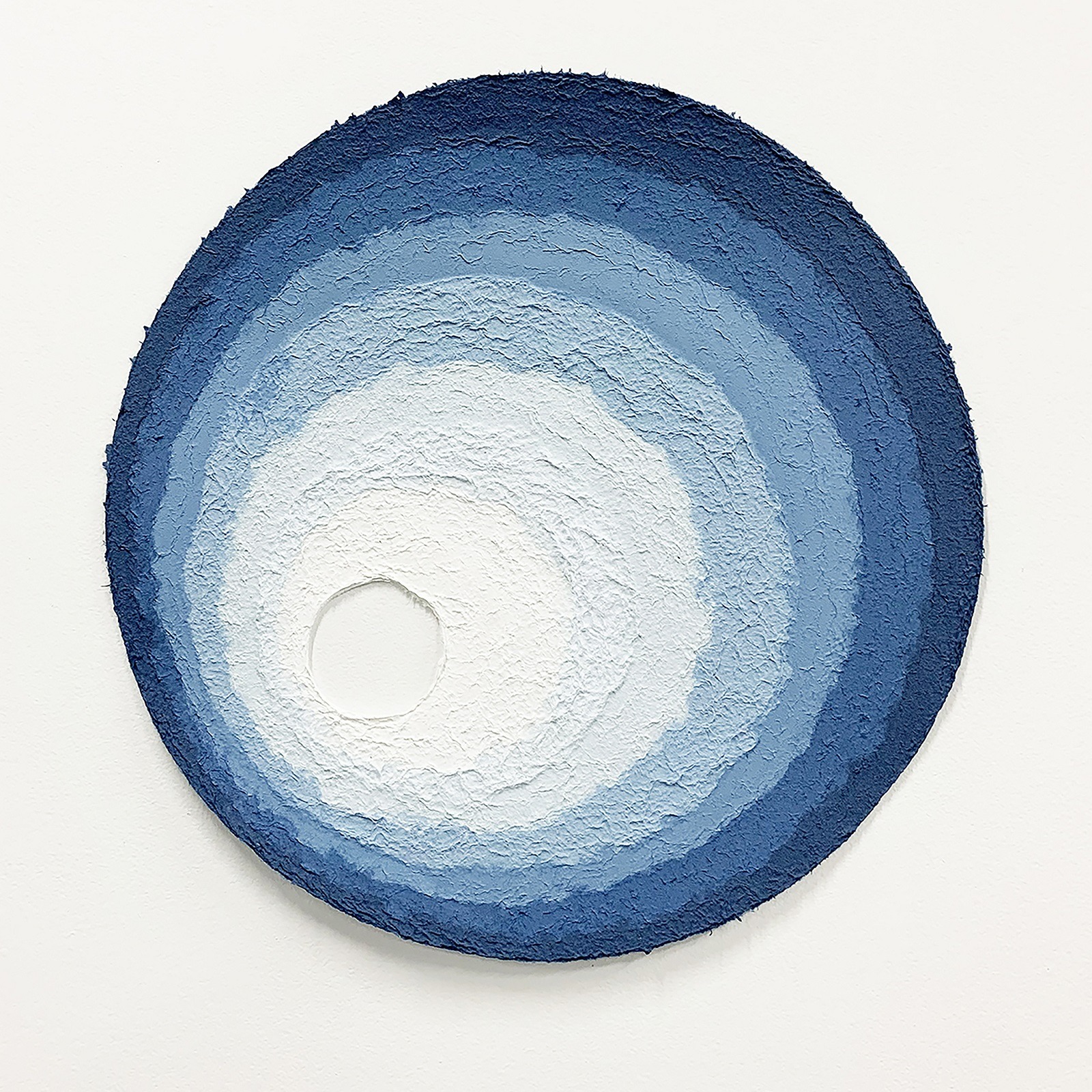
Cycles, continuity and connection
Tell us about your process from conception to creation
I tend to work in iterations, so a single piece or series will inform the next and so on. While I’m making one thing, I read and research, and get inspired looking at other artists work and make lots of notes and experiments. Trying to push mediums or processes is what keeps me interested, as you never really know what might happen until you give it a go. By using salvaged, and natural, materials I can often turn something into something else if I can’t quite resolve it first go.
Most of the work I make is pretty laborious, so I always have multiple works on the go at any time. It works as a kind of productive procrastination because if I get stuck on one thing I can just move to another until I work out what I need to do next.
Cycles, continuity and connection are recurring themes, and this sometimes is also expressed using the circle motif.
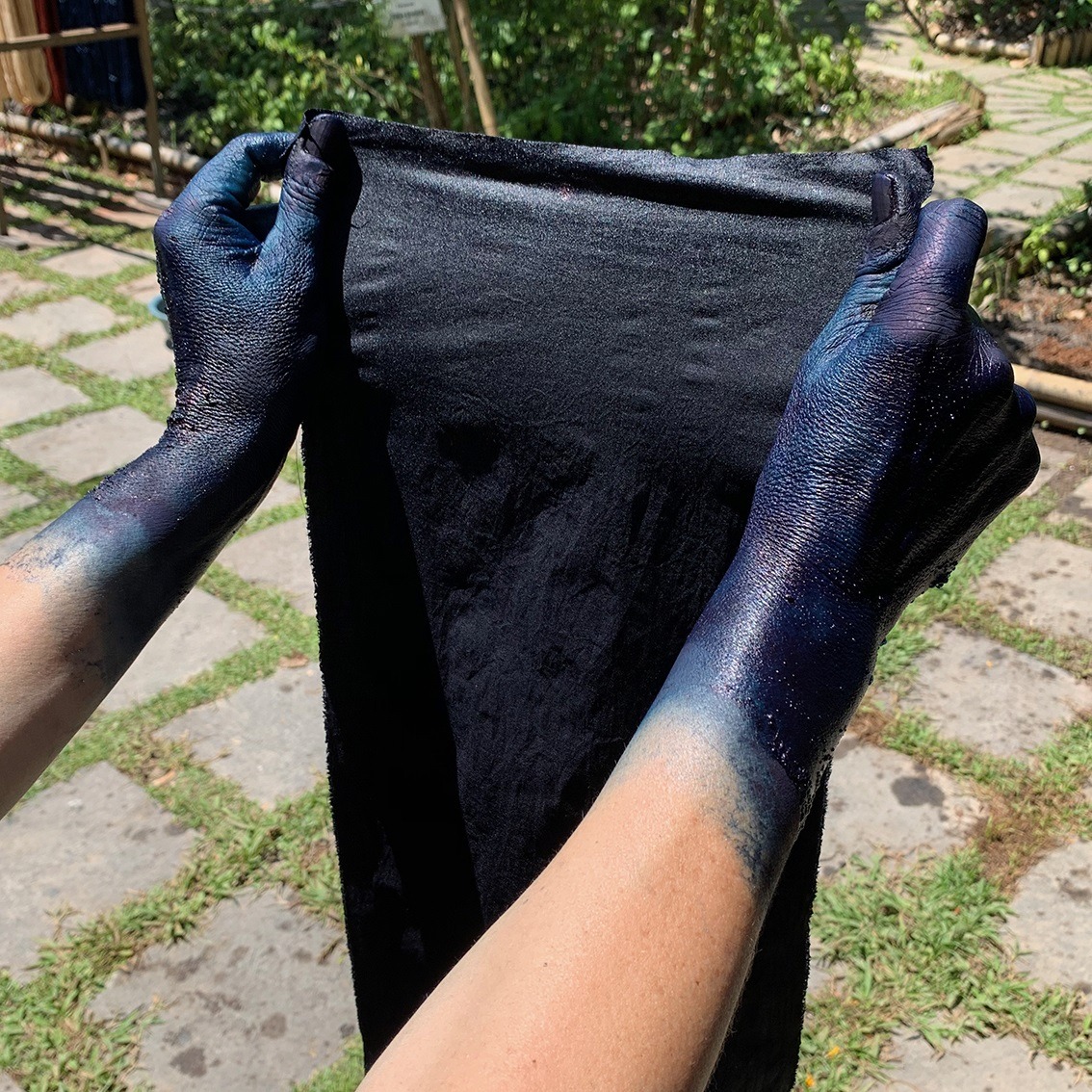
Tell us a bit about your chosen techniques and how you use them
Textile waste and indigo dye are both potent motifs working through ecological concerns, as they are loaded with cultural constructs and political implications. I’m interested in experimenting with ways of transforming textiles as a way to express productive potential. For me, this offers a sense of hope in the face of climate anxiety.
Salvaged textiles, already from paddock to product, worn thin and discarded, are redirected from landfill, hand-dyed with natural indigo then transformed into an object quite distinct from its original form. This can include layering up the dyed fabric a piece at a time to form stratified, sculptural objects; deconstructing the fabric down to pulped fibres to create handmade paper; or stitching garments together to create immersive, draped installations.
The work also draws on indigo’s long history of connecting humans with environment through cultivation and production of indigo plants, as well as it’s complex associations with globalisation, slave trade and industrialisation.
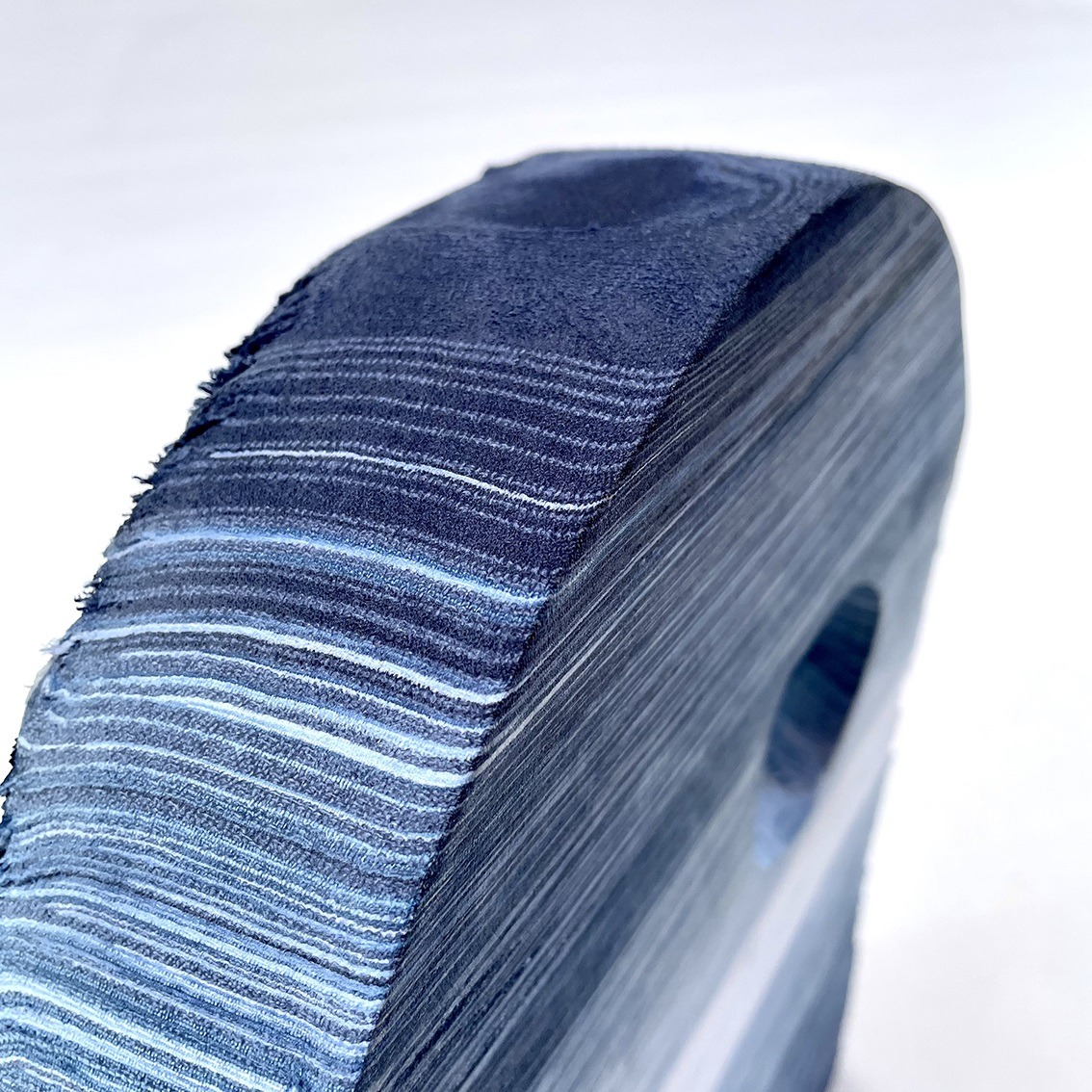
What currently inspires you?
I am constantly inspired by the ability of art to generate emotion – in particular, a sense of wonder. This is important when it comes to tackling difficult subjects, including but certainly not limited to climate change, as art can help to make political ideas accessible in unique or unexpected ways.
I am encouraged by collaborations in art and science, which are generating sustainable options, and by those people, especially the young ones, who are bravely standing up to injustices and seeking meaningful change through action.
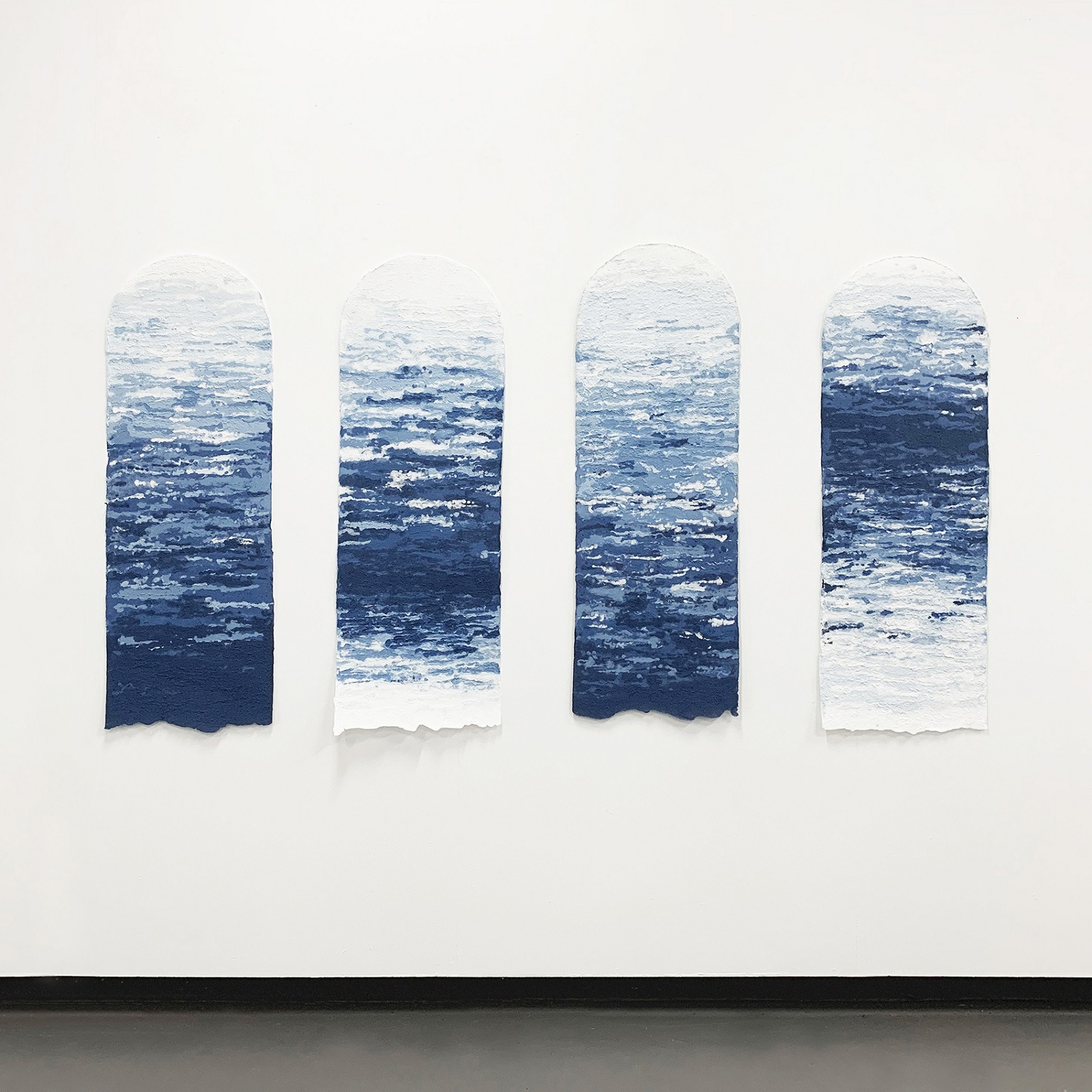
Seven shades of indigo
Tell us about a piece of your work that holds particularly fond memories and why?
These works are part of a series titled collectively ‘Nibbling The Sky’ and I thoroughly enjoyed making them!
Discarded, old heavy cotton bedsheets, that were worn thin in the middle, with holes, stains and frayed edges, were dyed in seven shades (eight values in total including the white). The fabric was then cut into tiny pieces and pulped. When working with the pulp, I was aiming for a layering effect similar to the way the textiles appeared when I layered them up in the Monuments works.
Quite unintentionally, these works suggested arch-framed vistas of sparkling water, however the recycled materials offered yet another “view” on relationships between textile production, consumption and waste.
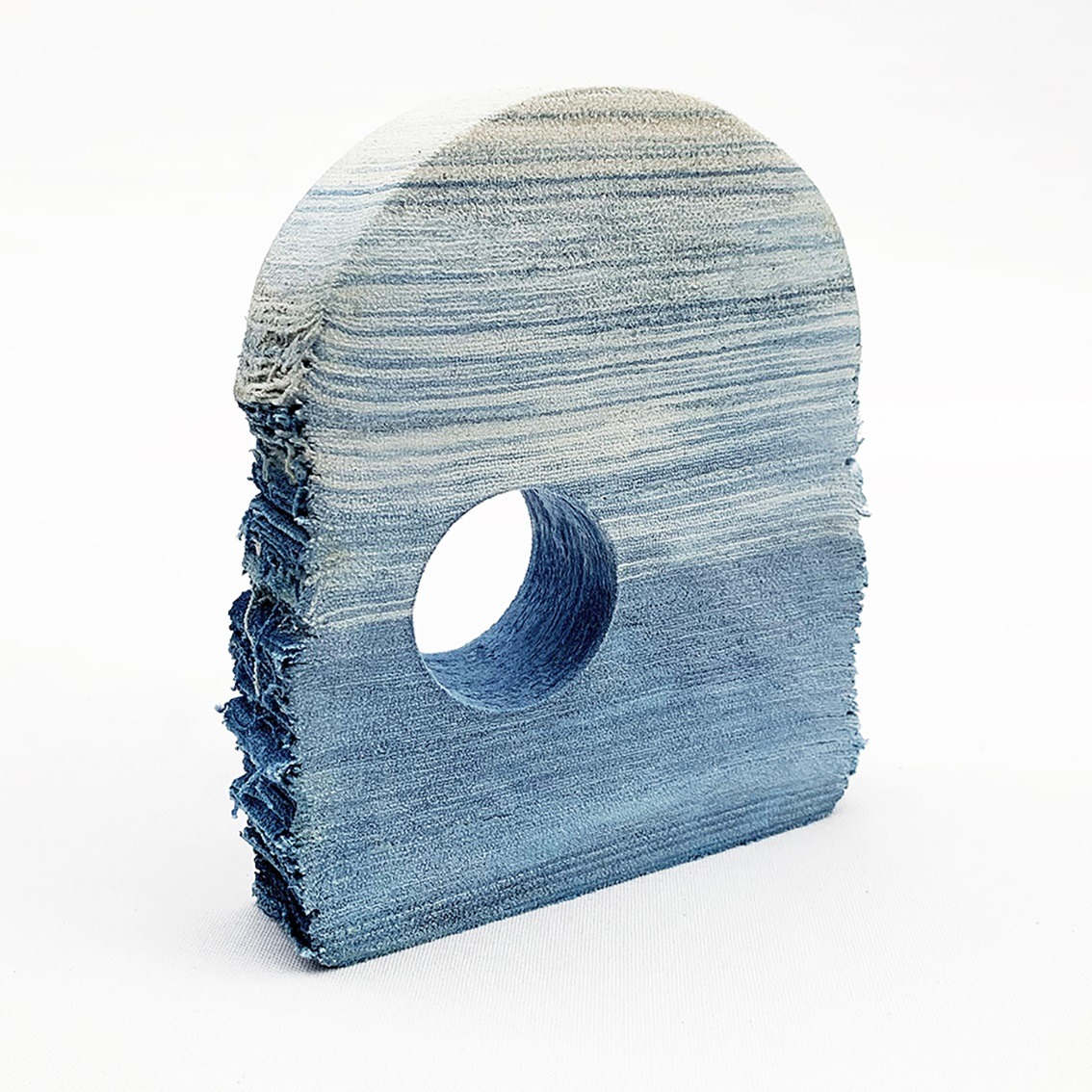
How has your work developed since you began and how do you see it evolving in the future?
In hindsight, most of the work I’ve made operates within the broader theme of humanity’s relationship with the natural world. My current work uses salvaged textiles and indigo, and while I still have so many things I want to explore within this, I am also interested in dyeing with food waste for some future experiments and also incorporating other plants into the processes.
In an attempt to expand the scope and reach of textile art so far I have made sculptures, installations, short films, performances and wall-based works. I’m keen to see how I can further expand this into public art pieces that challenge ideas of what textile art might be.
For more information visit www.rachaelwellisch.com
Has Rachael’s passion for sustainability and use of salvaged textiles and natural materials inspired you? We’d love to know – just post a comment below.
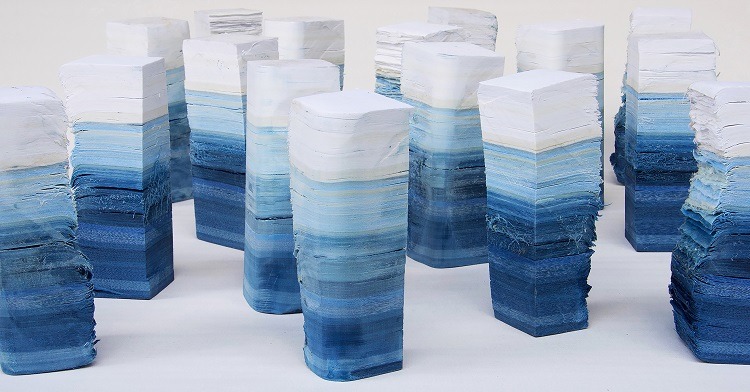
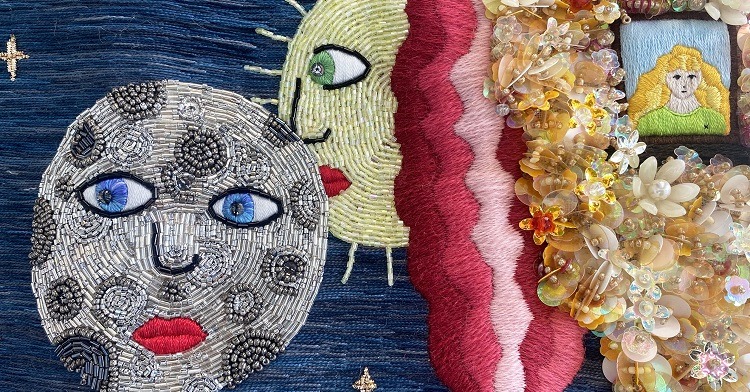
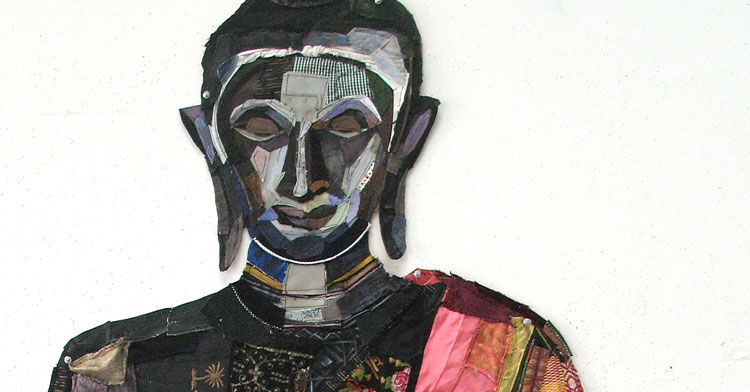
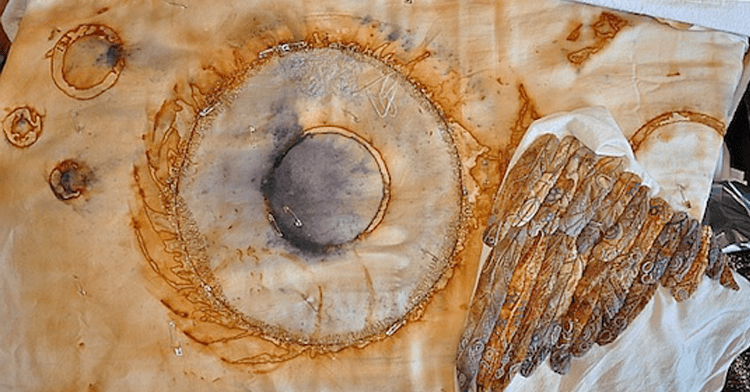
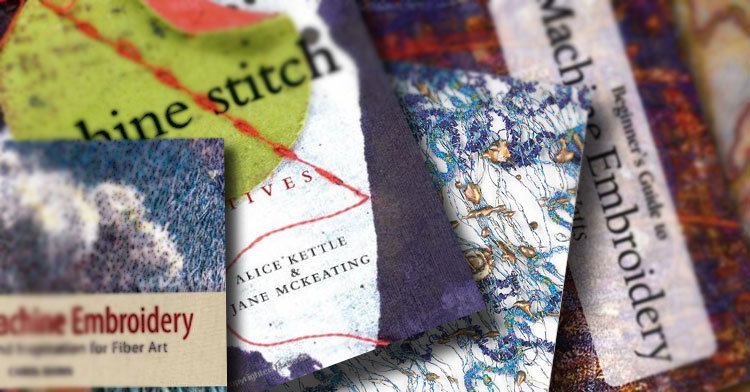
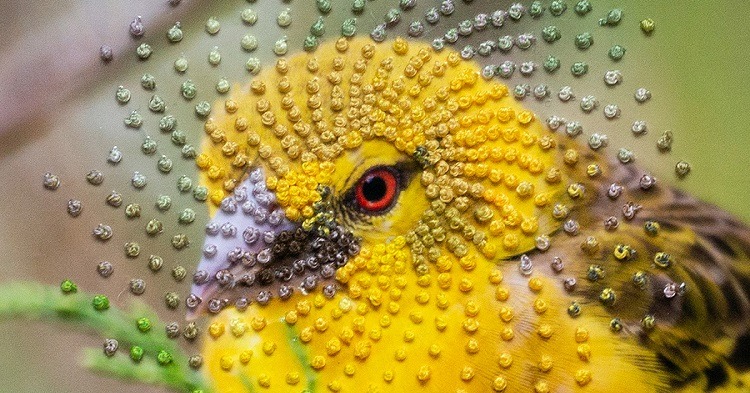
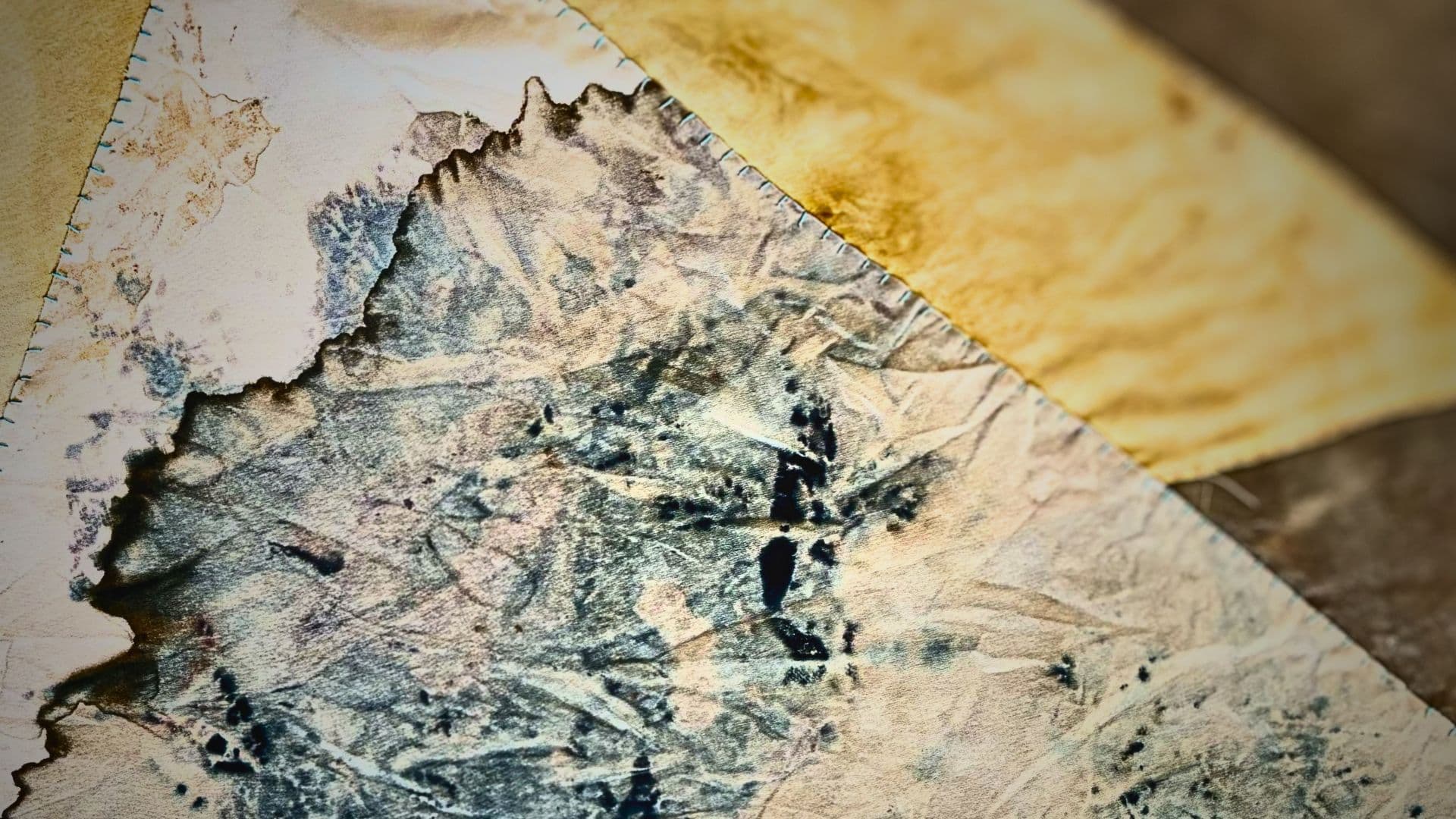
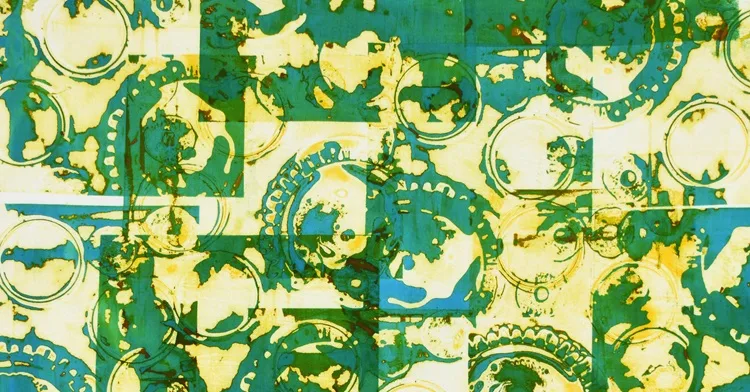
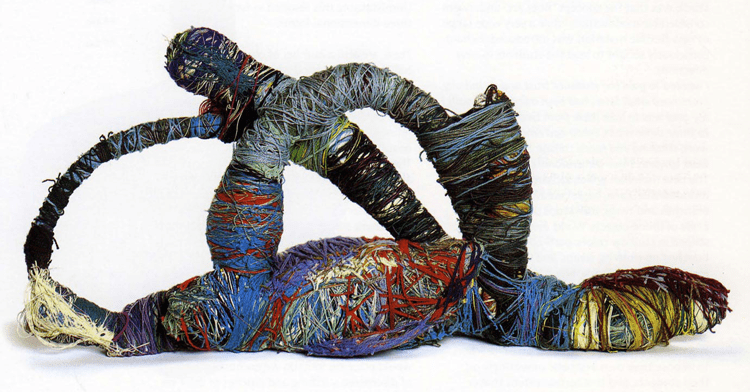
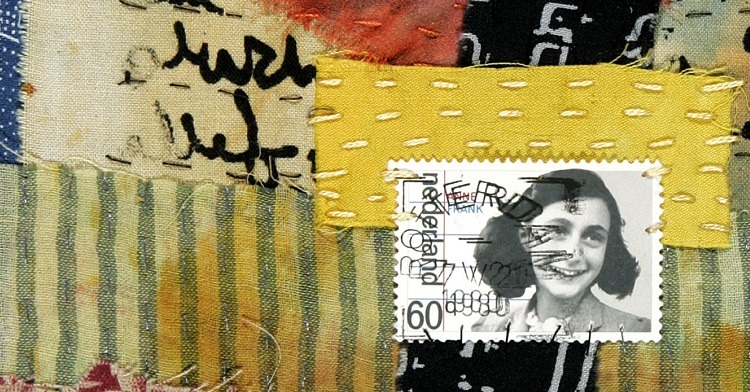
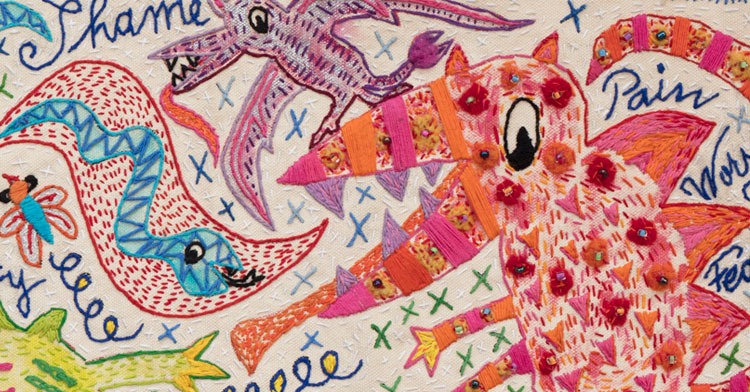
12 comments
michele gres
J’aime beaucoup le travail de Rachael . Je ne suis que peintre j’aime tous les travaux textiles mais je ne me suis pas lancée dedans !
Marr
I work with redyed bedsheets cut into strips to weave with. I would like to try upcycling bedsheets into pulp and play with paper for a while. Love your stuff Rachael.
amy
What glue do you use to glue your layers of fabric together for example your monumental schicts #5?
Brenda Cox
Gosh! Really love your work Rachel…it’s stunning…thank you for sharing
laura bruno lilly
Indigo is the perfect dye-medium for a social statement and for a natural product to use on organic ‘used’ materials…Such depth of intent in your work resulting in stunning displays.
Brava!
Kim Tedder
What beautiful calming work. The simplicity and colour have a meditative quality
Barbara Shapiro
Beautiful and deep color and thought process. I just loved this!
Liza Green
Thoughtful and very relevant, I’m really grateful you’ve introduced me to Rachael’s beautiful work. What an inspiration.
rose
what thought provoking work, i hope you managed to get the indigo off your hands!! or are your finger nails forever blue??
Rachael Wellisch
Thanks for taking the time to say so!
It takes a few days for the indigo to wear off my hands after dyeing, a little longer for the nails… and I have been questioned about it, but I guess its one of the tell-tale signs of a maker.
Arlette
I also was concerned about how her hands and arms, up to her elbow, were so completely saturated with the indigo dye.
It eventually fades, but not so fast.
Her work is fabulous and so inspiring. I travelled extensively in Australia, a million colours I saw!